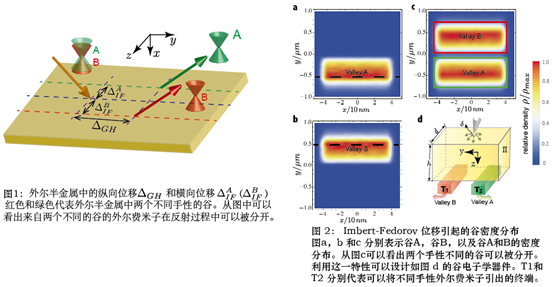ICQM members publish an article in Physical Review Letters reporting "The Topological Imbert-Fedorov Shift in Weyl Semimetals"
A PhD student Qing-Dong Jiang and his advisor Prof. X.C. Xie of The International Center for Quantum Materials (ICQM), School of Physics, Peking University, published an article in “Physical Review Letters” with the title: The Topological Imbert-Fedorov Shift in Weyl Semimetals.(PRL,115,156602) This work was done in collaboration with research scientist Haiwen Liu, Prof. Qing-Feng Sun from ICQM, and Prof. Hua Jiang from Soochow University.
As a system hosting Weyl fermions, Weyl semimetals have attracted wide attention. The Weyl semimetals have the unique energy dispersion, which promisingly leads to new functionalities and applications. Recently, the Weyl semimetal has been identified by the angle-resolved photoemission spectroscopy (ARPES) experiments. Analogous to photons, the Weyl fermions are massless with a certain chirality. This analogy indicates that many photonic phenomena can find their counterparts in Weyl systems. This work investigates the Goos-Hänchen (GH) and Imbert- Fedorov (IF) shift in Weyl semimetals.
The Goos-Hänchen shift and the Imbert-Fedorov shift are the optical phenomena which describe the longitudinal and transverse lateral shifts at the reflection interface, respectively. Q.-D. Jiang, et al. studied the wave-packet dynamics in Weyl semimetal, and found that the longitudinal and transverse shift can happen at the interface of Weyl semimetal. Furthermore, they demonstrate that the IF shift depends on the chirality, which originates from the topological property, i.e. the Berry curvature of the system. Based on these unique properties, the topological IF shift can be used to:
(1) Identifying a Weyl semimetal; (2) designing valleytronic devices; (3) detecting the Berry curvature of the system.
As commented by one of the referees: this work solved two important problems, i.e., to characterize Weyl semimetal and to detect the Berry curvature.

The work was supported by National Basic Research Programs of China, National Natural Science Foundation of China, and Collaborative Innovation Center of Quantum Matter, China.